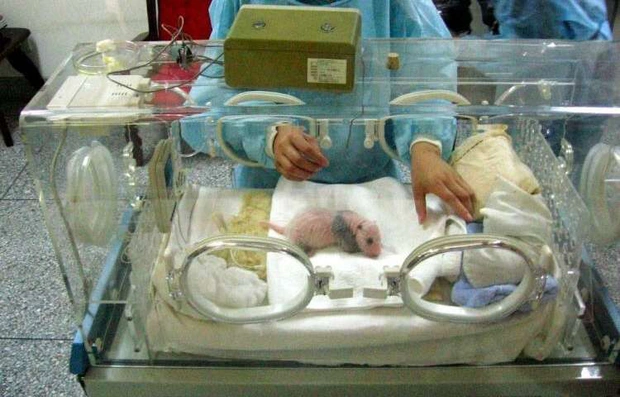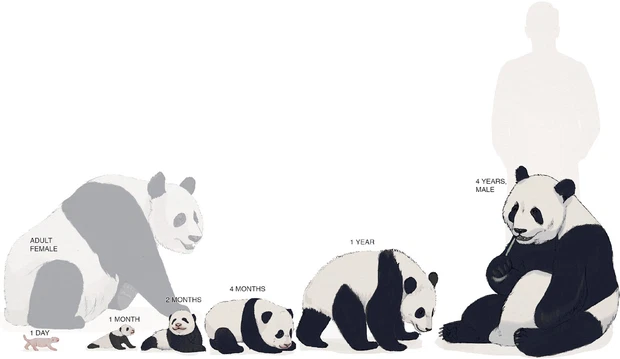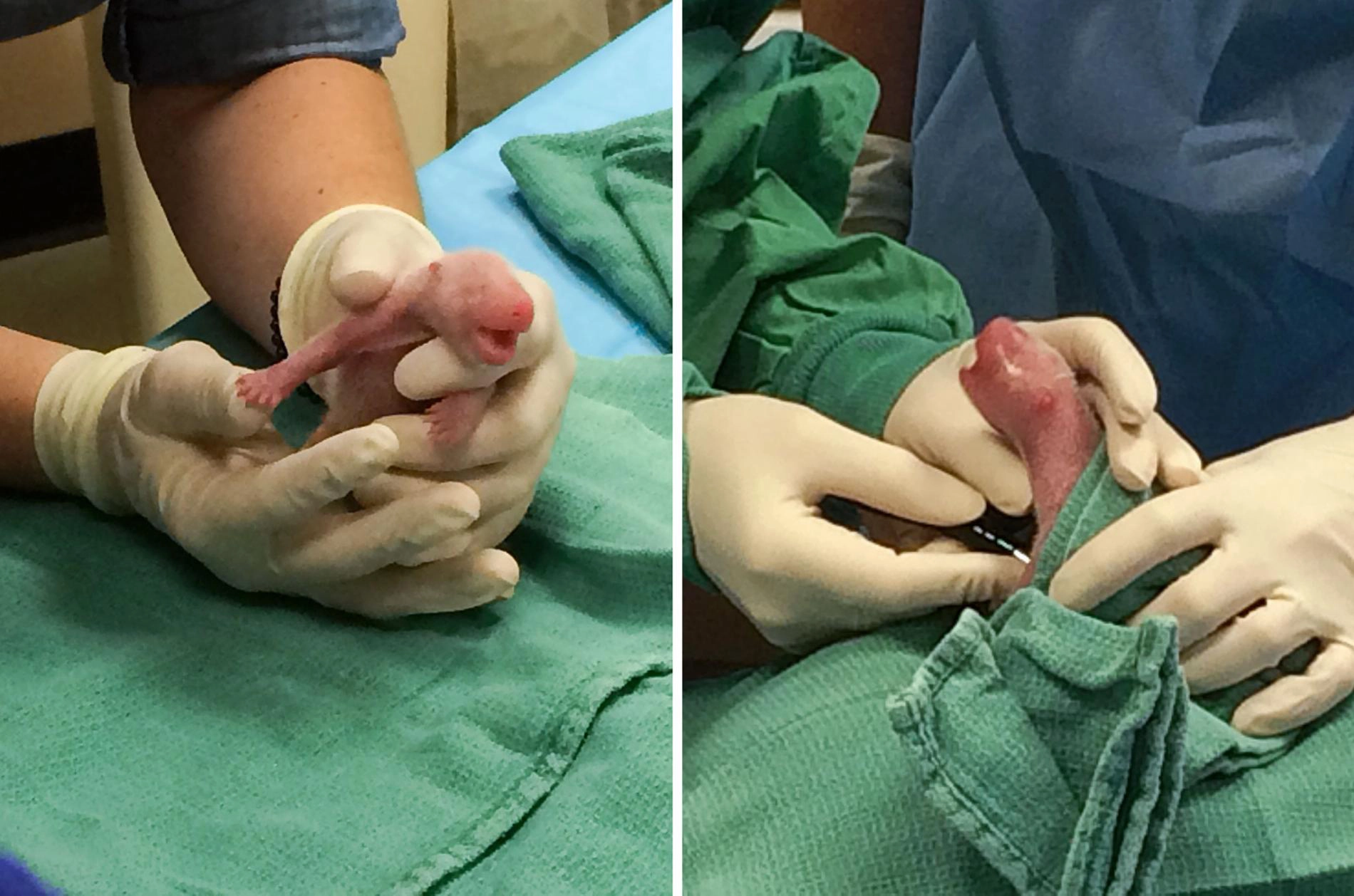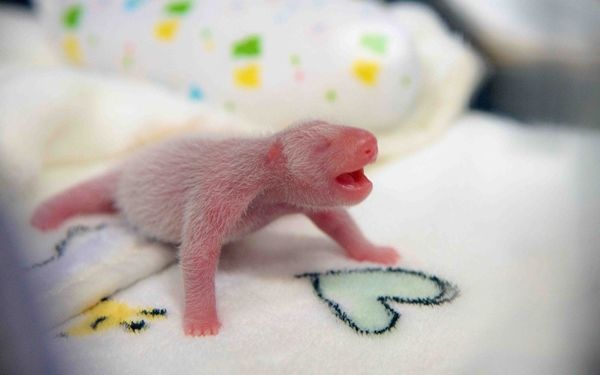A newborn panda weighs about 100 grams, which is only 1/900 of the weight of a female panda. To make it easier to imagine, you should remember that in humans, a newborn baby weighs 1/20 of the mother's weight. Mother bears are pregnant for about 3-6 months before giving birth to their cubs. Aside from marsupials, raccoons are the lightest mammals, with young relative to their mother's weight.
Among bears, only giant pandas have this phenomenon, which is of particular interest to scientists.


Why are baby pandas so small? According to The Washington Post, the answer lies in the panda's food - bamboo. The raccoon's favorite foods are low in nutrients, which means they have a low metabolic rate.
Mother bears have low blood oxygen levels and cubs need enough air to breathe, so giving birth rather than keeping them inside is an effective way for mother bears to increase their cub survival rates.



In addition, the fatty acids required by newborn giant pandas cannot be absorbed through the placental membrane. Therefore, drinking milk rich in fatty acids after birth is a better choice for cubs to survive.
Not only are they small in size, but the newborn giant pandas are also extremely weak and depend on their mothers very much. It takes 6 weeks for cubs to open their eyes, 3 months for them to start crawling, and 9 months for a mother bear to stop caring for her cubs. The giant panda has the characteristics of a low reproductive rate and high mortality rate of cubs and is listed as a high-risk animal for injury.






